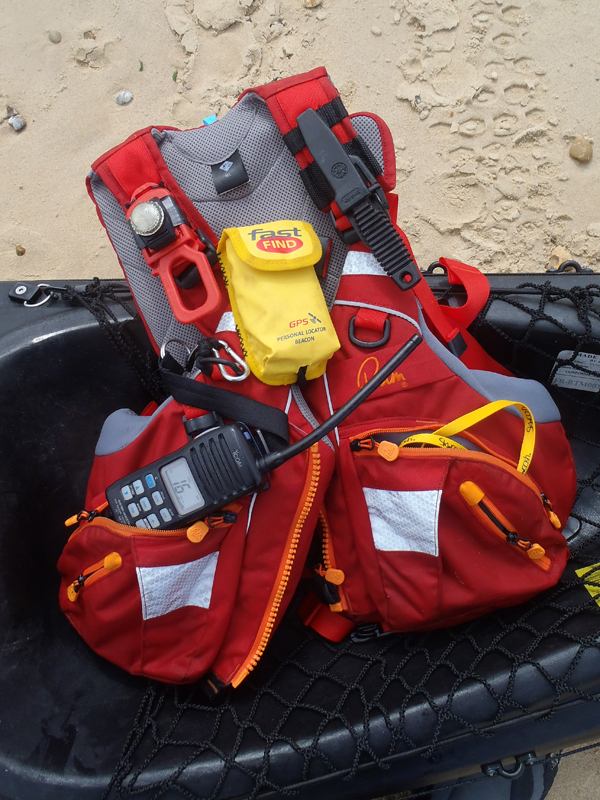So it was time I replaced my trusty Kaikoura with something else. The choice was easy – I replaced it with another, new model Kaikoura. Why? They’re what I need, none better for the kayak angler in my opinion.
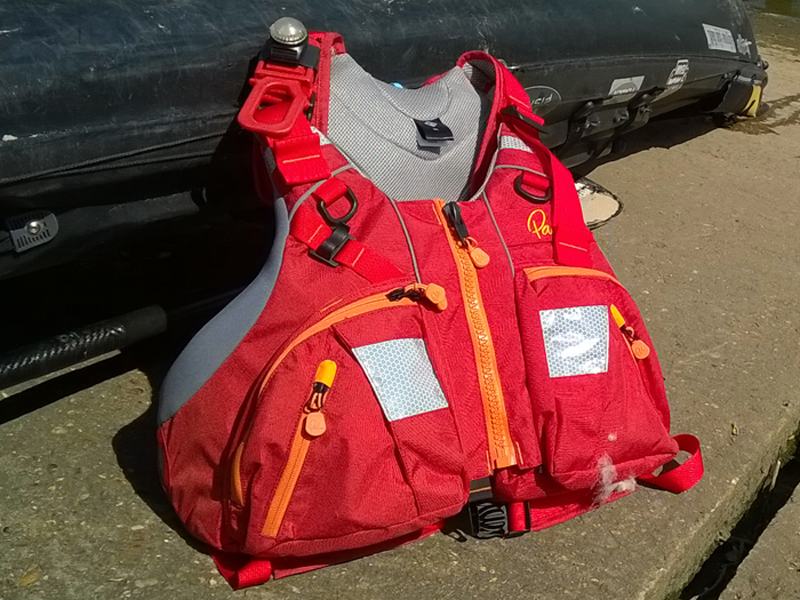
I had a Symbiant Tour before, loved that, but the Kaikoura just added that bit more. Of course, it’s not perfect for every person and every use but that’s more down to the inadequacies of what I try and attach to it which doesn’t have as much versatility built in though as a PFD for kayaking in general I think it would be incredibly difficult to beat for layout, comfort and safety. It’s not that my old one was worn out and unusable anymore, far from it as it’s so solidly made, but I had to get a new one as the mixture of catch and bait DNA, salt, grime, sunlight and washing had faded and discoloured it so much from the original saffron that I was starting to look like a paddling tramp and as I’ve just finished setting it up for use right now I figured I’d share what I put on, in, where, why and what it does.
Rescue knife
Fitted to my right shoulder, in reach of either hand, this easy to remove yet secure knife is short, blunt tipped, serrated and has a sharpened rope-cutting hook. The ridged handle aids a firm grip and a hole allows an additional lanyard to be fitted for added security if required. With fishing lines, anchor systems, paddle and rod leashed in abundance this is a vitally important piece of equipment to carry.
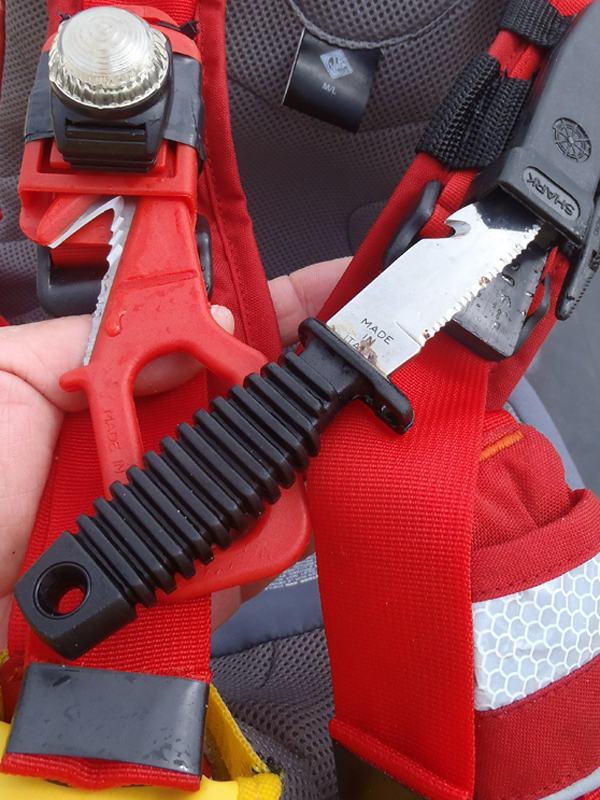
VHF radio
A vital tool for all sea users, this fits securely into the large right-hand pocket of my PFD with the aerial tucked away in a clip just above. While it is there as my first response to an emergency rescue scenario it is useful for weather forecasts and in constant use for general on the water radio traffic, both for calling and receiving. Channel 16, the emergency and calling channel, is constantly monitored with Channel 8 on dual watch in my own waters as the locally preferred ship-to-ship working channel for small commercial, charter and leisure boats. Channels 12 and 14 are the two local harbour calling channels and in other locations alternates are used – it is always best to check what is in use in the area you are paddling. Legally you are required to hold an OFCOM licence and an RYA Short Range Certificate to operate one without supervision.
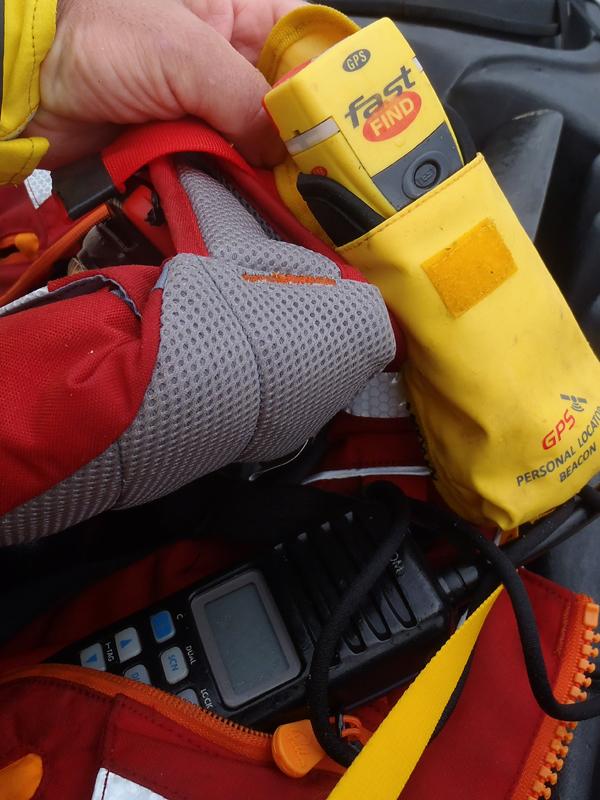
Personal locator beacon
A McMurdo Fastfind 210 GPS personal locator beacon, is fitted onto my right chest in a neoprene flotation pouch, tucked away in a nylon pouch and leashed with a stainless carabiner for easy removal and security while in my hand. Though mentioned first this is my last-call safety device. A GPS personal locator beacon registered with Falmouth Coastguard to myself, this is waterproof to 10 m, lightweight, pocket sized, easily held and designed to be carried; it never leaves my PFD. Transmitting a unique identification signal on 406Mhz via the international Search and Rescue System operated by COSPAS SARSAT, activation is then passed to regional SAR authorities who can then home in via the additional 121.5 Mhz beacon and flashing LED SOS light. With a six year battery life and 24 hour continuous operation on activation it is a safe and effective replacement for distress flares.
Line cutter
Fitted securely onto my right shoulder this rescue hook has a large, easy to grab handle and can be reached by either hand. Securely attached with cable ties and with limited alternative use it remains always available.
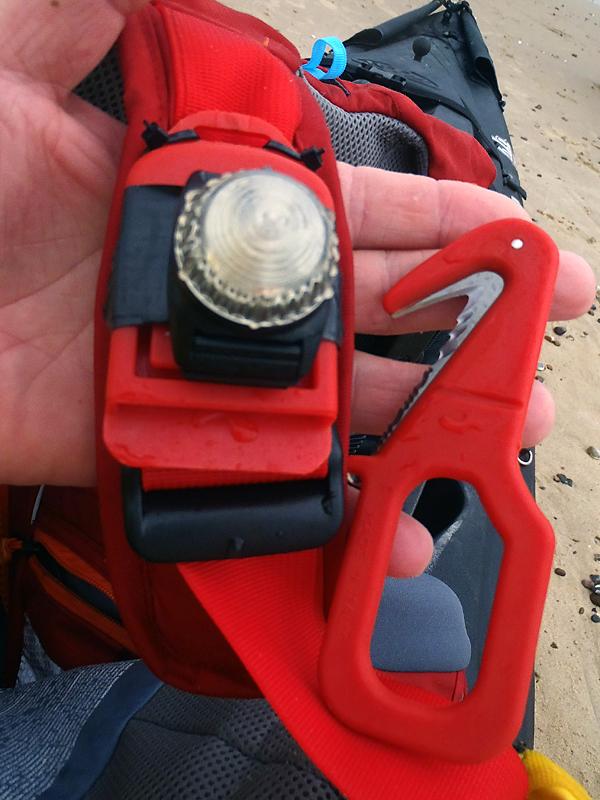
Strobe light
A small, simple and unobtrusive waterproof strobe fitted to my shoulder provides a visible source in low light conditions in case of search and rescue. Harbour masters will not thank you for heading through shipping or around port without lights.
Scissors
Though not really rescue kit these small general purpose scissors can cut braided fishing line and cable ties and are used mostly on the kayak rather than in an emergency situation when in the water. A few cable ties are also carried, predominantly for use with my anchoring system as breakout attachment points however they have a myriad of uses for on the water repair or security. So, what physical modifications are needed to do things neatly? Well, this only applies to fitment of accessories as the design works and works well in and of itself! The folded over strap ends are great for security but if I can’t pull through I can’t thread on…so they get cut as a matter of course and then taped or restitched for security once accessories are added. Knife, cutter and pouch attachment points always seem to go the wrong way so extra straps often need to added too. Clips are attached to D-Rings for leashing points and then it’s just a case of puling everything tight. All together it’s a marvellous PFD and the best for my use!
